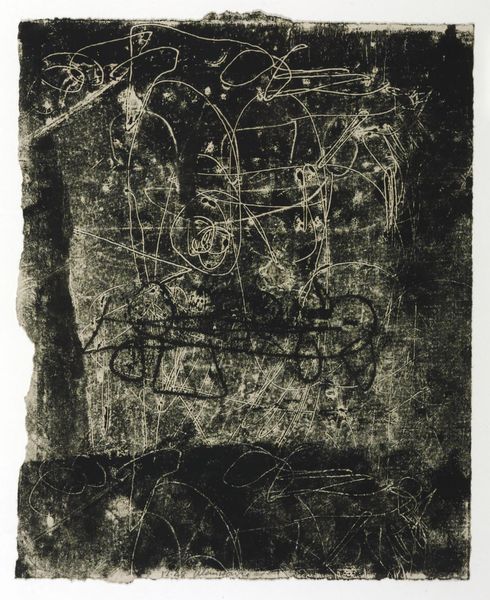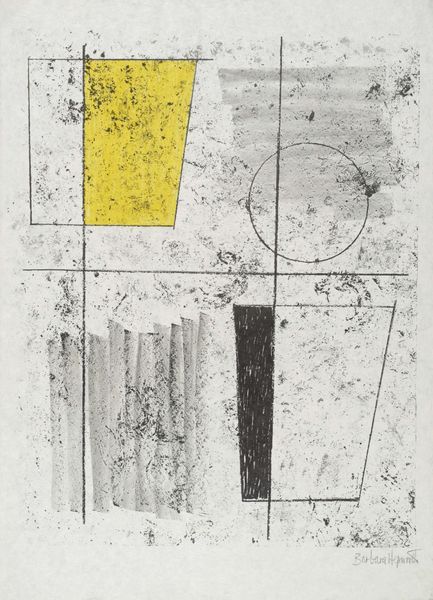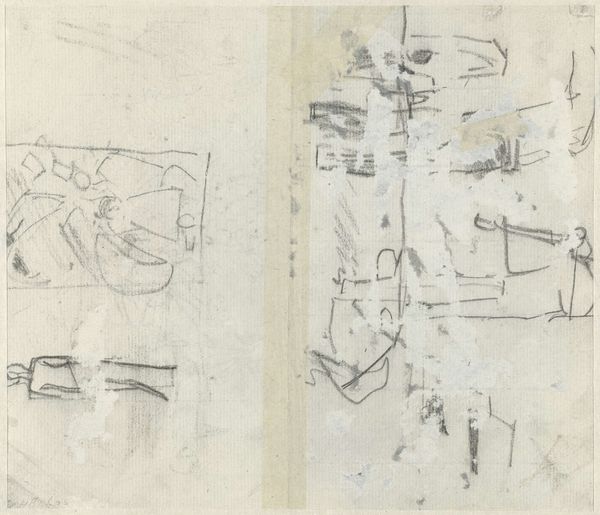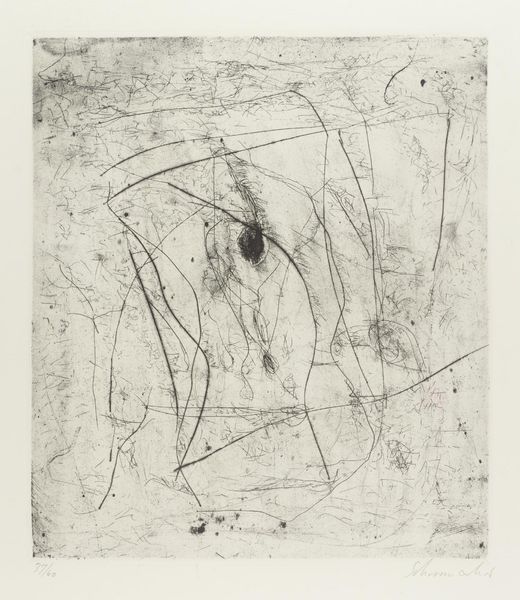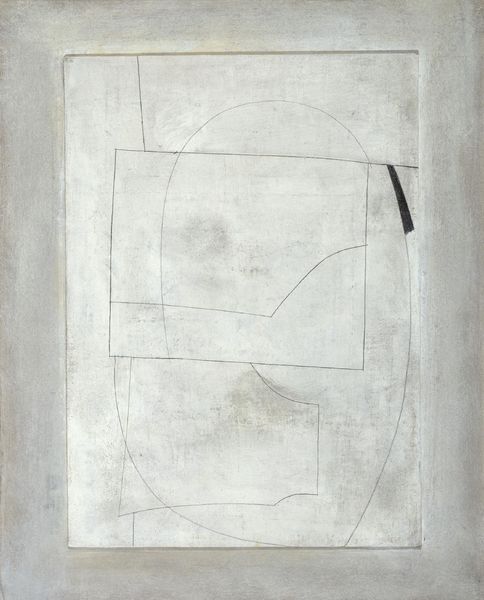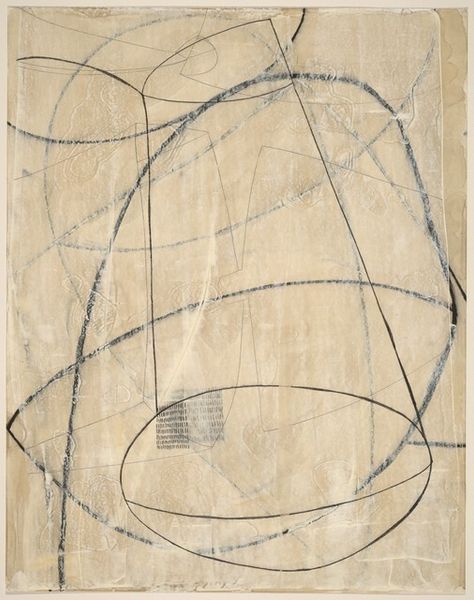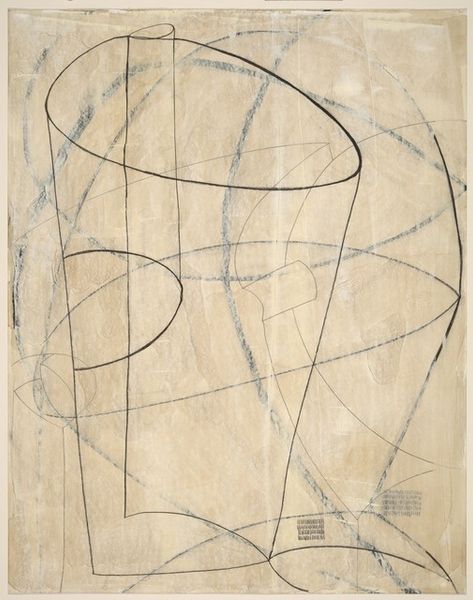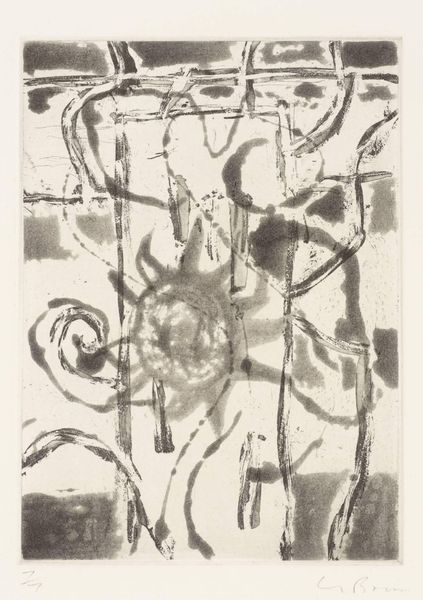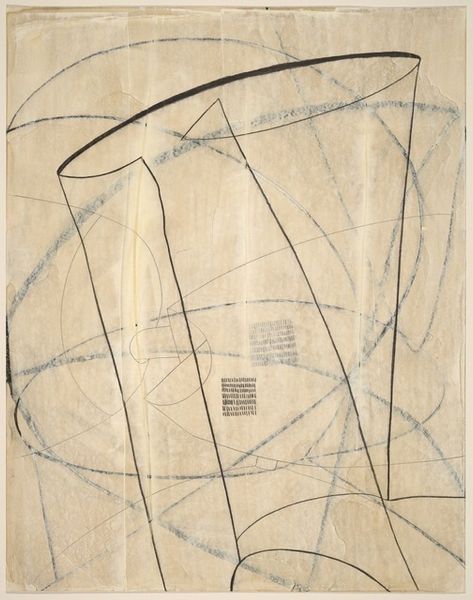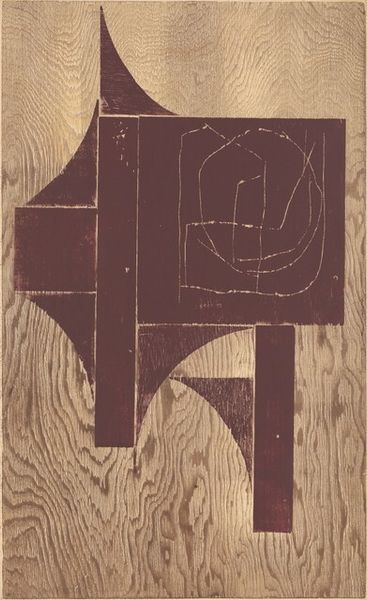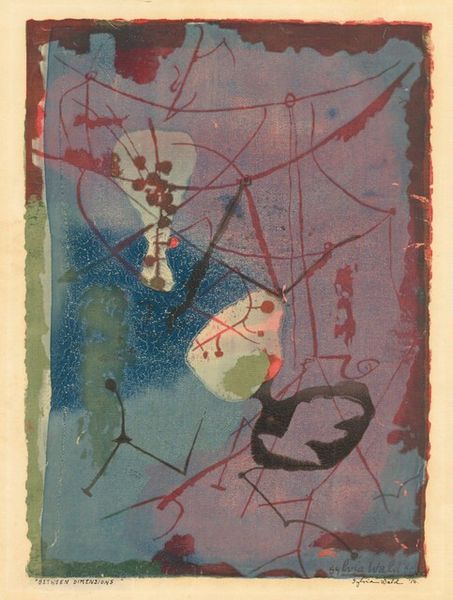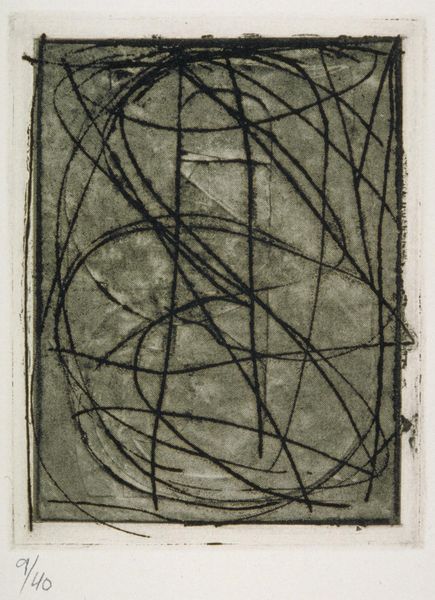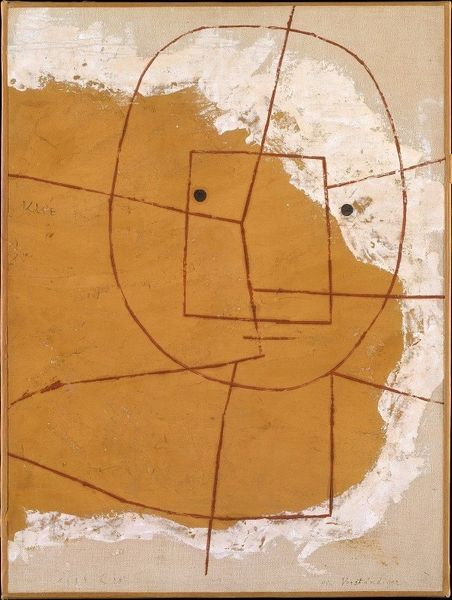
watercolor
#
abstract-expressionism
#
organic
#
watercolor
#
abstraction
#
line
#
watercolor
Dimensions: height 310 mm, width 204
Copyright: Rijks Museum: Open Domain
Curator: Let’s spend a moment contemplating D. Middelhoek’s watercolor work, "Vissen en schelpen," created before 1959. The title translates to “Fish and Shells.” Editor: It evokes a kind of whimsical marine archaeology. There is a very appealing sense of playful experimentation in the stark shapes against a blurred background. Curator: It certainly plays with the liminal space between observation and abstraction. Middelhoek's artistic process uses the properties of watercolor and a loose, gestural style that pushes our understanding of representational art towards a flatter space where line, texture, and tone matter more. The method has similarities to automatism, suggesting less conscious control, almost like letting the medium guide the direction. Editor: Agreed. Viewing this piece now, I consider the environmental context of the mid-20th century. This period had a developing, increasingly urgent environmental consciousness regarding our relationship with marine ecosystems—a discourse reflected in the abstraction of natural forms and concern regarding extraction and consumption. The shells evoke a sense of something being unearthed, displaced, rendered powerless. Curator: Yes, it is very thought provoking in terms of the making as an intentional expression. The materiality—watercolor washes over a grainy, textured support—points to a deliberate attempt at conveying a sense of fragility and perhaps of temporal flux, where these objects become unearthed and preserved for viewing. Editor: I'd go further and say the composition has this beautiful vulnerability, a silent commentary perhaps, or a subtle indictment, related to the impact humanity can have. It quietly compels us to see how we relate with the sea. Curator: Indeed. It is in moments of engagement that our connection to the artist is strongest. I do believe, too, the method reveals much, almost an X-ray, about the period's relationship to resources and consumerism, and perhaps how artists grappled with changing tides of awareness. Editor: And perhaps it offers us today an invitation to do the same. To grapple with our own tides of change. Curator: I would have to agree. Thanks to this piece, that grappling may very well result in insights that help reshape what comes next.
Comments
No comments
Be the first to comment and join the conversation on the ultimate creative platform.
